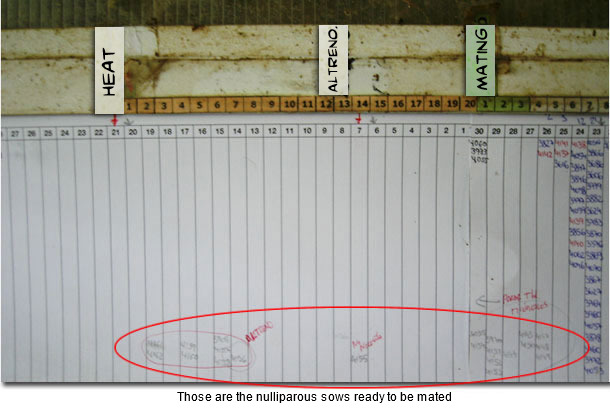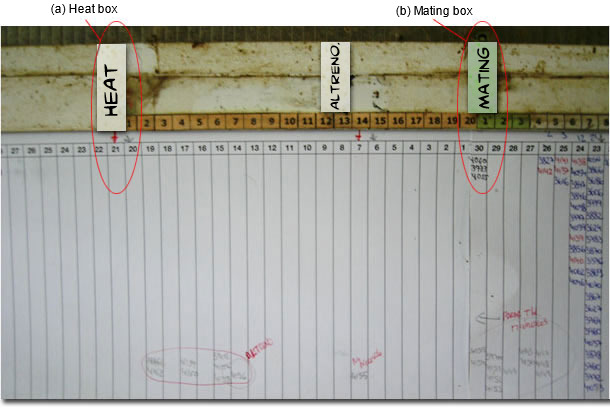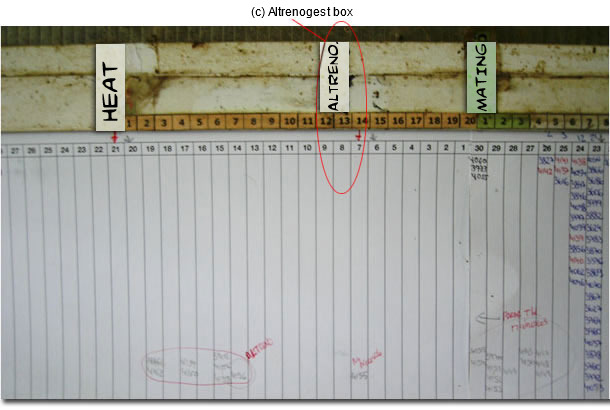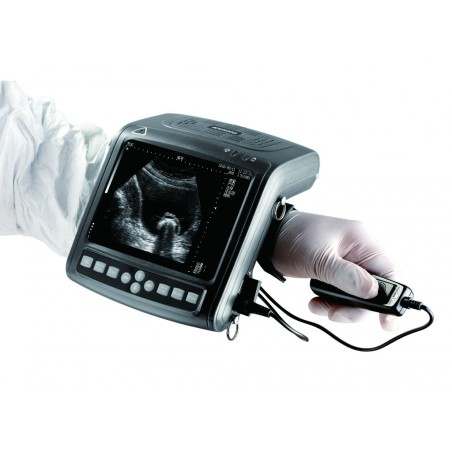Goal
The goal of this tip is to register the gilts that are coming into heat which can be interpreted quickly and easily.

Also to control the day to start the treatment with altrenogest when we wish to delay their mating/service.
Description
- The production planning chart is a very useful tool for controlling, quickly and easily, the distribution of the sows at our farm.
- The conventional planning charts starts on the day of the mating/service. Under this column we write down, daily, the sows that have been mated.
- It offers a lot of information: distribution of the production batches along time, number of mated sows per day, number and kinds of returns to oestrus, sows that are empty when tested with an ultrasound scanner, dead sows, abortions, farrowings forecast, moments in which certain treatments must be performed (vaccinations, control of the returns to oestrus, ultrasound scanning, entrance of the sows in the farrowing rooms, etc.).

- Nevertheless, the traditional planning chart offers us a fundamental piece of information: the day in which the gilts come into heat and the forecast of their matings/services.
- This information is very useful in order to be able to plan the matings/services of the gilts correctly, especially when we work with batch production system (> 1 week)
- In order to solve this, the solution is very simple. We have to lengthen the planning chart by 21 days more before the day of the mating/service.

- The box corresponding to the mating/service must keep on being placed on the present day (today would be April 30th). (a)
- If a gilt comes into heat, we make a note regarding her 21 days before, in the HEAT box (in this case on May 21st). This will be the foreseen date for the mating/service of that sow when it comes into heat again. (b)

- In this way we will obtain a daily register of the coming into heat of the gilts and of the forecast of their matings/services.
- In the case that we wish to delay the coming into heat of a gilt using altrenogest, this is very simple. About 8 days before the coming into the natural heat we will start the treatment and we will end it on the day of the weaning of the batch in which we want to include the gilt. (c)






